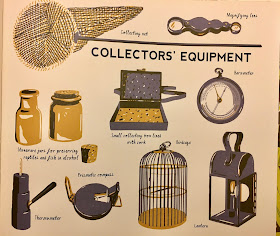 Visit Alyson Beecher on Wednesdays for Non-Fiction Picture Books at Kidlit Frenzy -- hashtag #nfpb2020! Thanks to her hosting and sharing.
Visit Alyson Beecher on Wednesdays for Non-Fiction Picture Books at Kidlit Frenzy -- hashtag #nfpb2020! Thanks to her hosting and sharing.
From others, too, who add their posts, you can discover and celebrate terrific nonfiction picture books!
I'm grateful to have received a copy of this wonderful book from Candlewick Studio, an imprint of Candlewick Press.
I enjoyed reading this story of, to me, this little-known scientist who came to the same conclusion and at nearly the same time concerning evolution and the origin of the species as Charles Darwin, thus "Darwin's Rival". Christiane Dorion tells the story of Alfred Russel Wallace from his earliest years in a poor family, making his own fun by playing in nature. He had to stop school at age 14 to become an apprentice to his older brother as a surveyor. That experience would foster a love for being outdoors and learning more and more about the plants he was seeing. He brought them home and learned to identify them. Moving on to a job as a teacher, though not so satisfying, it gave him time for further study. He began collecting insects and studying what he was seeing, asking questions, the same ones he asked nearly all his life: "Why do they all look so different?" and "Where did they all come from?" He had started his lifelong love of natural history.
The first step was to plan a trip to the Amazon rain forest with his friend Henry Bates. Darwin had already made his travel to the Galapagos and was home studying his notes and specimens, trying to figure out his own answers to those questions above. Wallace went to the Amazon, then on to the Malay Archipelago for specimens to sell so he could study even more.
 |
| one part of the equipment page |
The story is told in this book through pages of text that seem like a naturalist's journal, some longer pages, some identified species, with brief text in highlighted squares from Wallace's own words. It's beautifully presented, an example of this particular kind of story that shows the specimens themselves share the stage with Wallace himself. There also are some pictures of maps, ocean scenes with the ships in which he traveled.
 |
| one half of a double-page spread - I enjoyed the scenes from Wallace's travel, too. |
When he thought he had answers, he was in Malaysia, and sent a letter to Darwin with them, pushing Darwin to confirm his "same" hypothesis and publish his findings along with Wallace's letter. Wallace was shown to be gracious and delighted when Darwin finally published his famous book, and they became lifelong friends. Although nearly everyone knows about Darwin and his theories, Wallace's work certainly is to be respected as well. He is portrayed as an intrepid traveler, taking on challenges like traveling for days in a canoe with natives where sometimes they fought the current for miles. He also walked into jungles full of animals that were poisonous or with tigers that could attack. He was at ease with everyone, human or animal, it seems, came home at age 39 and continued to earn a living by selling his specimens and writing books about his work. He married and had three children, lived to the age of 90!
 |
| Extraordinary page of beetles! |
I enjoyed the book thoroughly, text, and illustrations, believe it would be a lovely inspiration to a reader to do further research. The back matter holds a map, a glossary, and a reading list.



What a great subject for a biography! I loved the book Pollen! Darwin's 130 Year Prediction, by Darcy Pattison, too. Looks like a great year for reading about Charles Darwin and his contemporaries.
ReplyDeleteOh, I don't know that book, Annette. I will look for it. Thanks! I am late today, have been working at the bookstore. Though we're not open yet, we are going through donations!
Delete